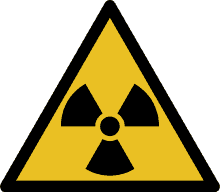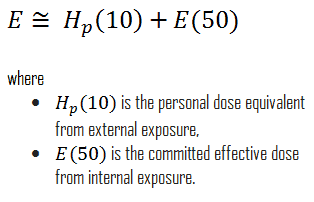
According to the ICRP, the System of Radiological Protection is based on the following three principles:
- Justification. “Any decision that alters the radiation exposure situation should do more good than harm.”
- Optimization of Protection. “Doses should all be kept as low as reasonably achievable, taking into account economic and societal factors.” (known as ALARA or ALARP)
- Dose Limitation. “The total dose to any individual … should not exceed the appropriate limits.”
The principle of dose limitation means that nobody should be exposed to an unacceptable degree of risk from activities involving radiation exposure. These dose limits are recommended by the International Commission on Radiological Protection (ICRP). They are in place to ensure that the individuals are not exposed to an unnecessarily high amount of ionizing radiation. These limits are generally set to limit stochastic effects to an acceptable level and prevent deterministic effects completely. Note that stochastic effects arise from chance: the greater the dose, the more likely the effect. Deterministic effects are those which normally have a threshold: above this, the severity of the effect increases with the dose. Dose limits are a fundamental component of radiation protection, and breaching these limits is against radiation regulation in most countries. Note that the dose limits described in this article apply to routine operations. They do not apply to an emergency when human life is endangered. They do not apply in emergency exposure situations where an individual attempts to prevent a catastrophic situation.
The limits are split into two groups, the public and occupationally exposed workers. According to ICRP, occupational exposure refers to all exposure incurred by workers in the course of their work, with the exception of
- excluded exposures and exposures from exempt activities involving radiation or exempt sources
- any medical exposure
- the normal local natural background radiation.
The following table summarizes dose limits for occupationally exposed workers and the public:

Source of data: ICRP, 2007. The 2007 Recommendations of the International Commission on Radiological Protection. ICRP Publication 103. Ann. ICRP 37 (2-4).
According to the recommendation of the ICRP in its statement on tissue reactions of 21. April 2011, the equivalent dose limit for the eye lens for occupational exposure in planned exposure situations was reduced from 150 mSv/year to 20 mSv/year, averaged over defined periods of 5 years, with no annual dose in a single year exceeding 50 mSv.
Limits on effective dose are for the sum of the relevant, effective doses from external exposure in the specified period and the committed effective dose from intakes of radionuclides in the same period. For adults, the committed effective dose is computed for a 50-year period after intake, whereas for children, it is computed for the period up to age 70. The effective whole-body dose limit of 20 mSv is an average value over five years, and the real limit is 100 mSv in 5 years, with not more than 50 mSv in any one year.
Occupational Exposure – Effective Dose
In most situations of occupational exposure, the effective dose, E, can be derived from operational quantities using the following formula:
The committed dose is a dose quantity that measures the stochastic health risk due to an intake of radioactive material into the human body. Since the operational dose limit of 20 mSv applies to the sum of the internal and external exposures, if a worker has some external dose, the ALI must be modified or offset to account for the external dose. For example, assume the worker has 10 mSv from external radiation sources, and only 10 more mSv are allowed from internal radiation before the worker reaches the occupational whole body limit.
See also: Derived Air Concentration
See also: Annual Limit on Intake
